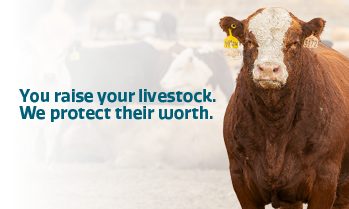A cost-effective option: AgriStability
Article written by SCIC
(Also available in 2023 Yield Saskatchewan publication presented by The Western Producer, and the Spring 2023 edition of Agriview magazine from the Saskatchewan Ministry of Agriculture)
In the agriculture industry, there are no guarantees. While Saskatchewan farmers and ranchers cannot control the weather, market fluctuations or rising input costs, there are ways to manage that risk. AgriStability is a cost-effective business risk management program designed to help farm operations facing large margin declines. The Program looks at the whole farm’s financial profile and provides benefits when there is a significant decline in the producer’s AgriStability margin.
AgriStability coverage is personalized by using each farm’s historical financial information, current income, expenses and accrual adjustments directly related to the farm’s production. The Program uses margins to evaluate the financial performance of the operation for the current year compared to the historical financial performance. The current year’s financial profile is called the program year margin and the historical information builds the reference margin. The reference margin is determined by excluding the highest and lowest margins in the previous five years and averaging the remaining three years. Accrual adjustments are included each year to measure changes in a farm’s accounts receivable, accounts payable, purchased inputs and commodity inventories. An AgriStability payment is triggered if the program year margin falls below 70 per cent of the reference margin.
Increasing AgriStability Compensation
The federal, provincial and territorial governments work together to determine priorities and funding for agriculture programming in Canada. The Canadian Agricultural Partnership agreement expires on March 31, 2023, and the Sustainable Canadian Agricultural Partnership is the next five-year policy framework to come into effect on April 1, 2023.
Under the new Sustainable Canadian Agricultural Partnership, the AgriStability compensation rate is increasing from 70 per cent to 80 per cent, effective for the 2023 program year. In other words, when the program year margin declines by more than 30 per cent of the reference margin, AgriStability provides a benefit payment of 80 cents for every dollar of decline below the trigger point.
Effective for the 2023 program year:
The AgriStability compensation rate is increasing from 70 per cent to 80 per cent – which means AgriStability provides a benefit payment of 80 cents for every dollar of decline below the trigger point.
Due to this compensation rate increase, producers with an eligible margin decline will receive larger AgriStability benefits. While this change helps provide greater stability for farmers and ranchers during times of uncertainty, the governments will continue working alongside industry with a goal to make the AgriStability Program more timely, predictable and easy to understand.
Other Recent Improvements
AgriStability also welcomed some major program changes in recent years. Most notably, in 2021 the Reference Margin Limit (RML) was removed, retroactive for the 2020 program year. This proved to be both an effective and equitable change to the AgriStability program. By removing the RML, farming operations with lower allowable expenses saw increased coverage and accessed larger benefits. For the 2020 program year, the impact of this change saw an increase of over $12 million in benefits (when compared to benefit calculations using the RML) for Saskatchewan producers.
The 2020 program year also saw the removal of private insurance indemnities from allowable income for the AgriStability Program. Previously, any benefits received where the entire premium was paid by the producer, such as private hail insurance, Livestock Price Insurance (LPI), or Global Ag Risk Solutions (GARS), this was included as allowable income. Now, considering this income non-allowable for the program year, producers can choose to mitigate risk by accessing additional producer-paid risk management options and their AgriStability benefits are not impacted. In addition, this income moves to allowable income in the reference years and increases the reference margin. This change provides flexibility for producers to consider all options available knowing it will not impact AgriStability coverage.
It's Easy To Enrol
In the last seven years, the AgriStability program provided over $600 million in benefits to Saskatchewan producers. Some of the main drivers of benefit payments in recent years include drought and harsh winter conditions, increased input costs, reduced commodity prices and market access issues.
All producers participating in AgriStability must pay an annual fee to be eligible for benefits. As a cost-effective option, the AgriStability fee is $4.50 for every $1,000 covered Contribution Reference Margin multiplied by 70 per cent – this works out to be $3.15 for every $1,000 of margin covered. The average cost for Saskatchewan producers to participate in AgriStability is $0.70 per acre for grain operations, or $1.21 per head for livestock operations.
Enrolling in AgriStability is as simple as calling the SCIC AgriStability Call Centre at 1-866-270-8450 and requesting a new participant package. To participate in the 2023 program year, the enrolment request must be made by April 30, 2023.
For producers currently enrolled in the AgriStability program, Enrolment/Fee Notices are generated annually and should arrive in mailboxes soon.
To learn more, contact your local SCIC office or visit scic.ca/agristability.







